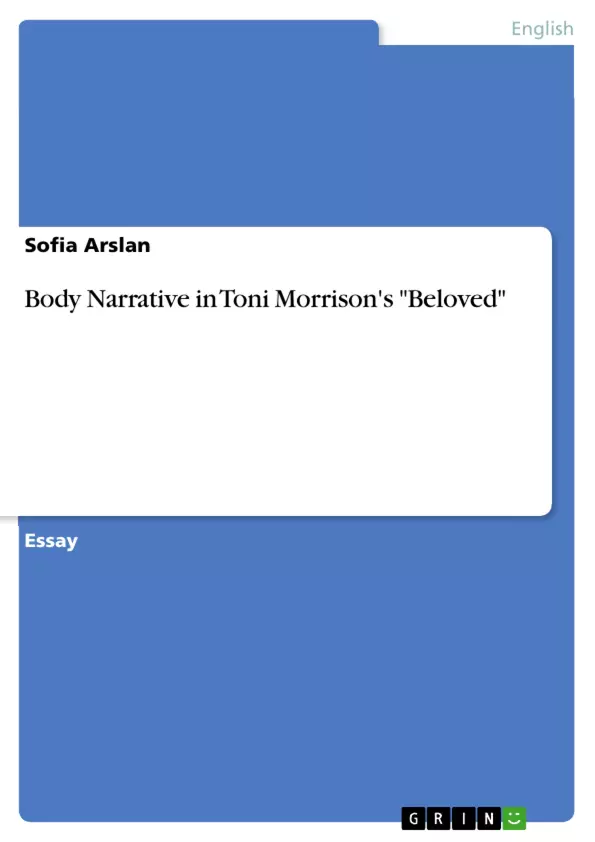The physical body is what acts as a mirror to one’s life’s experiences. Once the experiences have been lived through, they become memory— intangible, yet very substantial. The body imagery in the novel has a narrative to put forth.
In the process of “restorying”, Toni Morrison’s "Beloved" inks out the harrowing experience of slavery by utilizing the female body as a narrative space. This unconventional method denotes to the denigrated treatment of the enslaved masses – especially the doubly marginalized black women, whose violated bodies become a bloody canvas upon which unspeakable atrocities stamp life-long reminders.
Inhaltsverzeichnis (Table of Contents)
- Body narrative in Tony Morrison's Beloved
- The Trajectory of Slavery
- The Perversity of Slavery
- The Haunting Presence of the Past
- The Body as a Narrative Space
- The Scars of Slavery
- Conclusion
Zielsetzung und Themenschwerpunkte (Objectives and Key Themes)
This essay examines the significance of body narrative in Toni Morrison's Beloved. It explores how the physical body becomes a site of memory and storytelling, reflecting the traumatic experiences of slavery across generations.
- The use of body imagery to depict the horrors of slavery and its lasting impact
- The role of memory and storytelling in healing and confronting the past
- The connection between physical and psychological trauma
- The importance of the female body as a narrative space
- The lasting effects of slavery on generations of African Americans
Zusammenfassung der Kapitel (Chapter Summaries)
- Body narrative in Tony Morrison's Beloved: This section introduces the concept of body narrative and how it functions in Beloved. It argues that the novel utilizes the female body as a narrative space to convey the brutal realities of slavery.
- The Trajectory of Slavery: This section explores how the trajectory of slavery is anatomically built into the text across three generations. It examines the significance of branding marks, such as the chokecherry tree on Sethe's back, as physical manifestations of the past.
- The Perversity of Slavery: This section focuses on the incident where Sethe attempts to kill her daughter to protect her from the horrors of slavery. It highlights the perversity of slavery and the depth of Sethe's love for her children.
- The Haunting Presence of the Past: This section examines the role of Beloved, the ghost of Sethe's murdered daughter, in the novel. It explores how Beloved's physical presence and her hunger for stories about the past serve as a reminder of the past's enduring influence.
- The Body as a Narrative Space: This section further explores the ways in which the body is utilized as a narrative space in the novel. It argues that the characters' stories are dependent on materiality and that the body itself becomes a significant site of literary narrative.
- The Scars of Slavery: This section examines the lasting effects of slavery on the characters' minds and bodies. It explores the concept of "rememory" and how psychological scarring is manifested in physical marks, such as the scar on Beloved's forehead.
Schlüsselwörter (Keywords)
Key terms and concepts explored in this essay include: body narrative, slavery, trauma, memory, storytelling, female body, rememory, psychological scarring, physical manifestation, and the African American experience.
- Quote paper
- Sofia Arslan (Author), 2016, Body Narrative in Toni Morrison's "Beloved", Munich, GRIN Verlag, https://www.grin.com/document/351543



